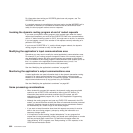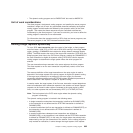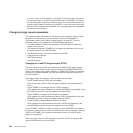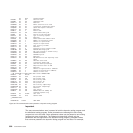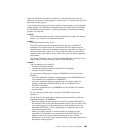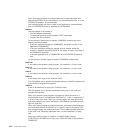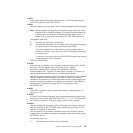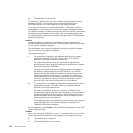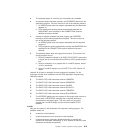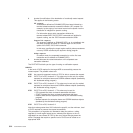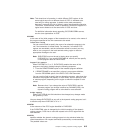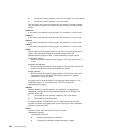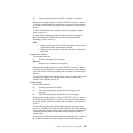When your routing program is invoked because the routed transaction has
abended (DYRFUNC=4), the information in the communications area, or in the
DFHROUTE container, is not meaningful.
Your routing program can alter the data in any application’s communications
area, or DFHROUTE container, addressed by DYRACMAA.
DYRACMAL
This field applies to the routing of:
v Terminal-initiated transactions
v Transactions started by terminal-related START commands
v Program-link (DPL) requests
For the routing of these types of request, DYRACMAL contains one of the
following numerical values:
v If the user application employs a COMMAREA, the length, in bytes, of the
application’s COMMAREA
v If the user application employs a channel and has created, within the
channel, a container named DFHROUTE, the length, in bytes, of the data in
the DFHROUTE container
v If the user application has no COMMAREA and no DFHROUTE container,
zero
For the routing of all other types of request, DYRACMAL contains zero.
DYRACTCMP
is not used by the dynamic routing program. On invocation, it is set to nulls.
DYRACTID
is not used by the dynamic routing program. On invocation, it is set to nulls.
DYRACTN
is not used by the dynamic routing program. On invocation, it is set to nulls.
DYRBLGTH
is the length of the copy of the TIOA/LUC buffer.
This field applies only to dynamic transaction routing, or Link3270 requests (not
to the routing of program-link requests).
DYRBPNTR
is the 31-bit address of a copy of the TIOA/LUC buffer.
This field applies only to dynamic transaction routing (not to the routing of
program-link requests).
When your dynamic routing program is invoked for routing, because of a
route-selection error, or for notification (DYRFUNC=0, 1, and 3, respectively), it
is given a copy of the input TIOA. Your routing program can alter the terminal
input data passed to the routed transaction—see “Modifying the initial terminal
data” on page 595.
When your routing program is invoked because a previously-routed transaction
has terminated normally (DYRFUNC=2), it is given a copy of the output TIOA.
Your routing program can monitor the output TIOA to detect possible problems
in the AOR—see “Receiving information from a routed transaction” on page
596.
When your routing program is called for a Link3270 bridge request
(DYRTYPE=8), the address of a copy of the TIOA/LUC buffer is not passed in
DYRBPNTR.
610 Customization Guide



